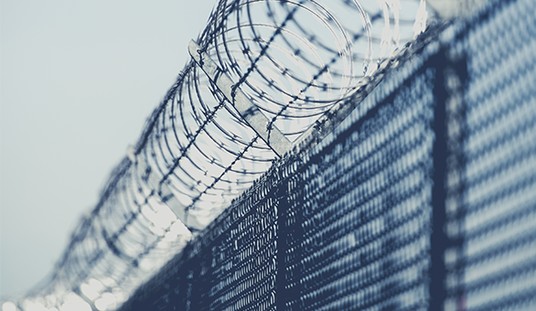“Spectacular” may be too strong a word. The Pfizer and Moderna vaccines are spectacular. How about “damned good and worth getting at the first available opportunity” for J&J instead?
Today’s announcement of the new FDA analysis is a prelude to the meeting of outside advisors that’s scheduled for this Friday, where experts will debate whether to recommend emergency-use authorization for the vaccine. Given these results, it’s a cinch that the answer will be yes, with approval expected sometime this weekend. Once the FDA greenlights it, two million doses will be ready to ship next week. The bad news is that that number is far fewer than J&J had initially hoped to have available by the end of February. The good news is that they’re still on track for 20 million to ship by the end of March. And remember what makes J&J special: It’s a one-dose vaccine, unlike Pfizer and Moderna. Every dose administered is a *full* vaccination, not a partial one, which means a faster and simpler immunization process for millions.
The tricky part in selling this to the public may be the fact that it’s “only” 72 percent effective whereas Pfizer and Moderna are upwards of 95 percent, a conundrum I wrote about here. Are we going to see Americans go “vaccine shopping”?
The vaccine had a 72 percent overall efficacy rate in the United States and 64 percent in South Africa, where a highly contagious variant emerged in the fall and is now driving most cases. The efficacy in South Africa was seven points higher than earlier data released by the company.
The vaccine also showed 86 percent efficacy against severe forms of Covid-19 in the United States, and 82 percent against severe disease in South Africa. That means that a vaccinated person has a far lower risk of being hospitalized or dying from Covid-19.
Normally when we think of “vaccine hesitancy” we think of people who are skeptical of vaccines and want to wait and see how others fare after getting the shot before doing so themselves. The difference in efficacy between J&J and Pfizer/Moderna may lead to a new form of vaccine hesitancy among pro-vaxxers, in which some Americans who want an mRNA vaccine decide to hold out if they’re not locally available instead of taking the plunge with J&J instead. How do you convince them not to?
One obvious way is to focus on what really matters. Pfizer and Moderna may be better at preventing infection, but infection isn’t why people fear COVID. Debilitation is. The endgame with the vaccines has never been about eliminating all risk of illness, which is impossible, as David Leonhardt reminded readers this morning. It’s about turning COVID into what it was falsely cracked up to be by naysayers at the start of the pandemic — “just the flu.” Thanks to the vaccines, including J&J’s, for most vaccinated people the disease should be something milder than the flu by the time we’re done with it:
In Israel, among 602,000 people who received vaccines, only 21 later contracted Covid and had to be hospitalized. Twenty-one is obviously not zero. Vaccines are almost never perfect. But the vaccines are turning Covid into the sort of risk that people accept every day. (6/x)
— David Leonhardt (@DLeonhardt) February 24, 2021
Only 3.5 out of every 100,000 vaccinated Israelis were later hospitalized with Covid symptoms.
During a typical flu season in the U.S., roughly 150 out of every 100,000 people are hospitalized with flu symptoms.https://t.co/GQh4nOG6DI
— David Leonhardt (@DLeonhardt) February 24, 2021
Two weeks ago I used the analogy of vaccines as bulletproof vests. If you were told that you were going into battle tomorrow and requested the best bulletproof vest the armory has, only to be told that none of those are left in stock, your response wouldn’t be, “Screw it, then, I’ll fight without one.” You’d take the next best vest available knowing that some protection is likely to save your life even if it’s not the best protection available. And that’s what J&J does: As scientists have been at pains to note, there were zero hospitalizations and zero deaths from COVID among the vaccinated group in the company’s trials 28 days after getting the jab.
J&J vaccine (blue line) vs placebo (red line), cases of #covid19 in trial, from FDA briefing documents. Protection from 1-shot vaccine ~Day 14. Briefing docs also showed after 14 days, 2 hospitalizations in vaccine group vs 29 in placebo (none @ 28 days): https://t.co/VTACxmyWbn pic.twitter.com/iAGwrmppv5
— Meg Tirrell (@megtirrell) February 24, 2021
The fact that there were two hospitalizations after 14 days but none after that suggests that the potency of the vaccine may increase over time, possibly making it more comparable in efficacy to Pfizer and Moderna:
FDA briefing document on J&J Covid vaccine posted. The data are very strong, the J&J vaccine provides robust efficacy across all demographics and variants; and shows rising protection over time, consistent with belief it's eliciting strong T-Cell response. https://t.co/azdgLIjtXs
— Scott Gottlieb, MD (@ScottGottliebMD) February 24, 2021
So it’ll keep you from dying, it’ll keep you from going to the hospital, and it’ll give you very strong odds of avoiding a “severe” case, if perhaps not quite as strong as you’d have with Pfizer or Moderna. But we shouldn’t get too hung up on comparing the efficacy of different vaccines, notes Nature magazine, as those numbers can be more art than science:
It might be tempting, but it simply isn’t possible to directly compare the effectiveness of vaccines on the basis of those results alone, cautions David Kennedy, who studies the ecology and evolution of infectious diseases at Pennsylvania State University in University Park. Each measure of efficacy comes with a degree of uncertainty, and trials might have differing definitions of important criteria, such as what constitutes a ‘severe’ bout of COVID-19 compared to a ‘moderate’ one.
Added to this are the demographics of each trial: in the case of the Oxford–AstraZeneca vaccine, for example, the developers collected few data about the vaccine’s efficacy in people over 65. This led Germany to authorize the vaccine only for those under 65, even though the European Medicines Agency recommends it for all adults.
And the vaccines were studied at different times in various countries. Each trial can only offer a snapshot of protection against the viral variants that were dominant in that time or place, says Kennedy. “That number relates to a particular point in time,” he says. “How that translates into protection over one to two years is not the same.”
J&J may actually be preferable to the mRNA vaccines from a safety standpoint, as the Times notes the data showed “noticeably milder side effects than the Pfizer and Moderna vaccines and without any reports of severe allergic reactions like anaphylaxis.” It also appears to be more effective against the formidable South African strain of the virus than competitors like Novavax and Oxford are.
Ultimately, though, the strongest argument for taking whatever vaccine is available as soon as it’s available is simple herd immunity. The more Americans are vaccinated, whether at the level of 95 percent efficacy a la Pfizer and Moderna or 72 percent efficacy a la J&J, the more difficult it’ll be for the virus to infect others and thus the fewer opportunities it’ll have to mutate randomly into vaccine-resistant variants. That’s J&J’s great virtue — because it’s a single shot and can be stored at normal refrigerator temperatures, the population as a whole may get more bang for the immunization buck from it than it would from the somewhat more effective competition. Roll it out, get it into as many people as possible as quickly as possible, and watch the flames of this roaring inferno begin to die down.








Join the conversation as a VIP Member